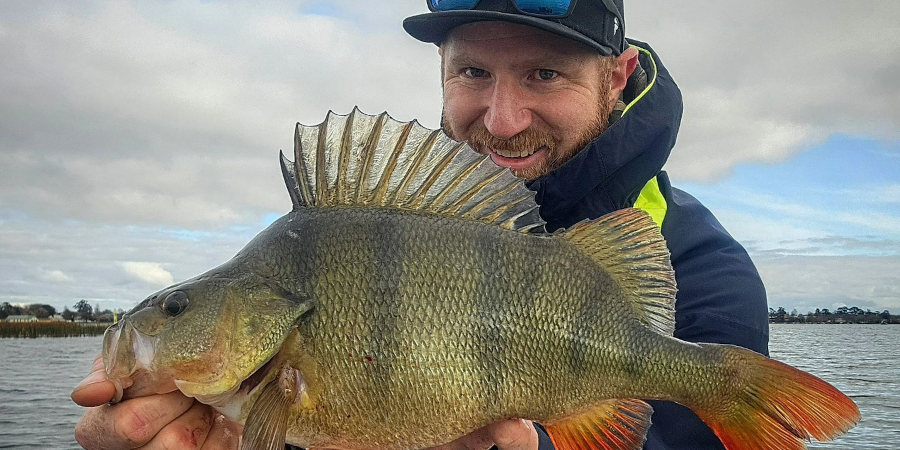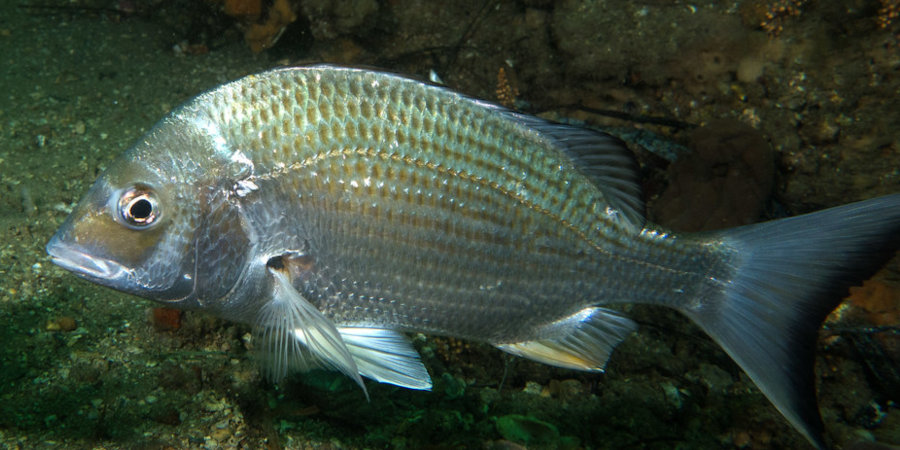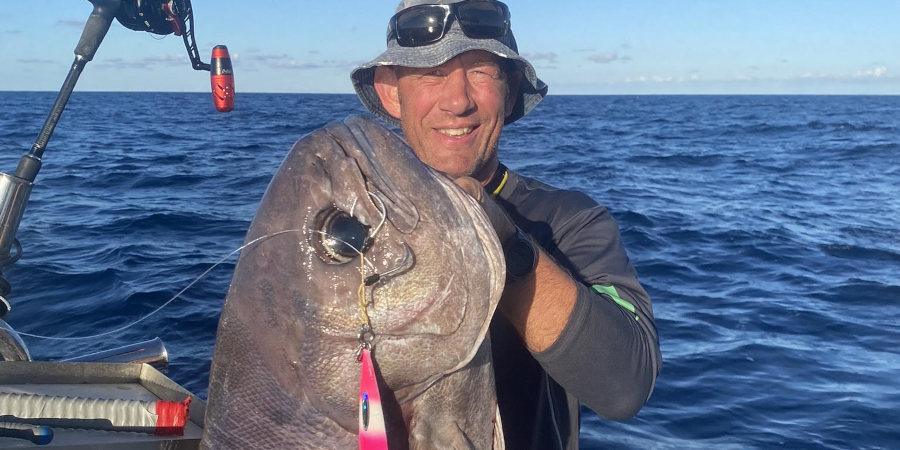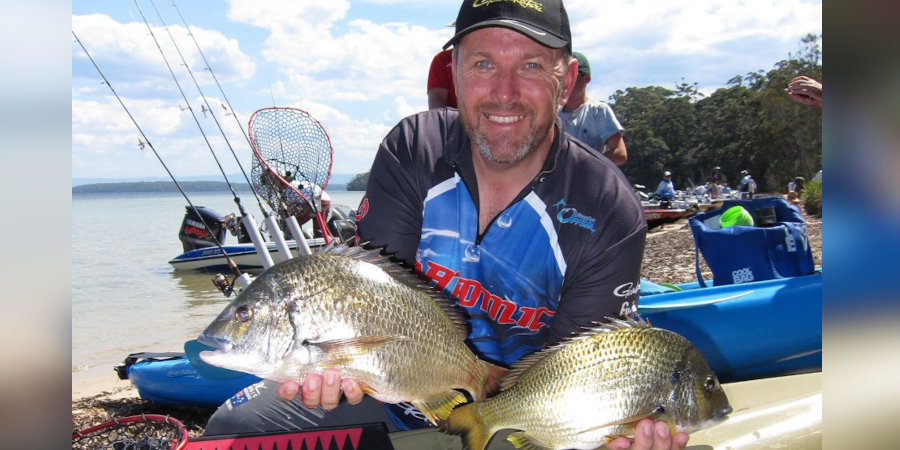

Mark Bantich
Local Fishing Personality
Mark is a personal friend and long-time fishing tragic who has taught Greg a ton about lure and fly fishing. Residing in Broome, Mark takes every opportunity to fully explore the remote Kimberleys and the fishing the region offers. Mark was the owner and editor in chief of the former Fly Angler magazine and is competent both with lure and fly in any northern Australian scenario.
Mark’s Tips For Long Rod Lure Fishing
- Long rod fishing with lures is an ancient and very effective method of catching fish shore based, but recent advances in tackle have taken this style of fishing to new levels. It’s all about being able to reach and target fish that can’t be reached with conventional tackle.
- This approach can be effective when beach fishing for a range of pelagics such as tailor, Australian salmon, queenfish, tuna, mackerel, kingfish cobia and other species that are susceptible to high-speed fishing. But when fished with slow pitch style jigs it’s also deadly on demersal species such as snapper, mulloway, emperor, coral trout and other targets.
- Optimal rod length for this style of fishing is 13 to 15 foot with a slight to moderately parabolic action. This allows the angler to generate the high line speed required for super long casting and also give shock absorption when a fish is hooked on zero stretch braid.
- Mark prefers the reel to be mounted fairly low on the rod, but it comes down to angler preference. Try and find a setup that allows you to comfortably reach the reel when the rod is in a rod bucket.
- Many traditional beach bait fishing rods are up to the task, Mark likes the Assassin line, but Wilson, Penn, Shimano, Daiwa and plenty of others have suitable options.
- Reels need to be large enough to have sufficient line capacity (400-450m), plus large spools for long casting and high line retrieve ratios. 8000-14000 size reels are best, Mark prefers the 14000 size, but if you want to go smaller he finds that the 8000 size reels have better gear ratios than the 10000.
- Selecting the right line is critical because of the line speeds generated. Soft braids tend to result in wind knots and the line getting wrapped around the first guide. In Mark’s experience, Varivas PE3 jigging line is the perfect combination of stiffness and thinness. For cost effectiveness Mark will load the reel with a cheaper 4X braid and topshot with 300m of Varivas braid.
- Rather than a mono or fluoro leader, Mark uses a braided shock leader for its thin diameter and low-profile knot, maximising casting distance and giving protection to the part of the line that comes under maximum stress during casting. The shock leader might be 100lb and should be long enough that you get 3-4 turns on the spool of the reel with a foot or two drop from the end of the rod, with a strong, small clip at the end. An FG knot is perfect for connecting line and shock leader.
- From the clip on the shock leader, attach 1-2m of fluorocarbon to a snap swivel to which the lure is attached. Mark uses 50lb leader at the lighter end for species such as tailor, but steps up to 80lb leader for casting over rock and reef.
- In ideal conditions and with the right lures you’ll be casting 140-150m (with practice) and there are a few different casting styles. The “South African” cast involves using plenty of muscle, but the “pendulum cast” used by competitive casters is the most efficient way to generate line speed for the longest casting. Check them out on YouTube.
- A glove is essential for this style of fishing – or you can use a bionic finger, which is Mark’s preference. Don’t try and cast with this gear and a naked hand, or you’ll get cut to the bone. Mark prefers the bionic finger for most fishing, but switches to a well-made, dedicated casting glove if he’ making a lot of rapid casts, for instance when he’s casting skipping poppers.
- This style of fishing is physically demanding, so don’t expect to be able to do it for a full day – it’s better to limit your long rod endeavours to the prime times and use more conventional techniques at other times. During retrieve, the rod is held relatively vertical, so a gimbal (rod bucket) is important to reduce angler fatigue.
- It’s best not to target species like GT’s and kingfish over reef, because you have little chance of landing a fish when there’s 130m of reef to get it over.
- Slow pitch style jigs can be cast long, allowed to sink to the bottom and worked with very short, sharp twitches, allowing them to hit bottom again between twitches. After a few casts of bouncing the lure over the bottom without success, then try working the lure in the same way, but faster. Again if there’s no success, repeat but do it super slowly. Keep mixing it up until you find the cadence that’s working.
- High speed metal jigs can be cast and worked in much the same way as you’d normally work them, at high speed for a range of pelagic species, depending on what parts of Australia you happen to be fishing.
- Surface lures such as skipping poppers can also be very effective. A good example is the GT Ice Cream, which can be cast long and simply worked at a medium paced constant speed. Generally speaking, avoid the large, GT style cup face poppers – they’re like casting a bucket and will reduce the effectiveness of this technique.
- Dense, wooden stickbaits can be very effective and can be given amazing action with minimal effort. Quality plastic stickbaits can work well too, though slightly harder to get casting distance with.
- With slow sinking stickbaits or slow pitch jigs, you can cast over the top of a reef and work them fast for pelagics, then slow down as the lure reaches the reef and target the usual reef species. Once the lure is back over sand it can be slowed even further and hopped over the bottom for jewfish and the like. This approach enables the angler to target 5-6 species effectively in a single cast.
- The humble bucktail jig is also super effective. Mark makes his bucktails extra bulky in the body to compensate for the inability to add a soft plastic tail and will put a little bit of scent on the thread that holds the body material on the jig (not on the feathers or fur though).
- Soft plastic lures generally don’t survive the long casts, while most bibbed minnow style lures have too much air resistance for super long casts. They’re still worth trying if you believe that’s the lure for the occasion.
Soft Plastic Lure Fishing Hacks 101 With Greg Vinall
EPISODE # Check out our archives for more information on Botany Bay Fishing Spots!Fishing with soft plastic lures can be incredibly rewarding if you know how to use them effectively. With over 25 years of experience, I've picked up a range of tips and tricks that can...

Advanced Soft Plastic Techniques With Rory Benn-Clibborn
This interview with Rory Benn-Clibborn is EPISODE 679. Check out our archives for more information on Lure Fishing In Australia!In this masterclass, I chat with Rory Benn-Clibborn from Perch Palm Lures about various advanced techniques for fishing with soft plastic...

The Art Of Luring Bream
Tim “The Bream” Morgan is highly respected for his achievements on the tournament bream circuit, so when he gets chatting to fellow bream gun Andrew Death, you’d better believe that the pro tips will start flowing!

Episode 626: Advances in Deep Slow Pitch Jigging with Jim Potts
Deep drop slow pitch jigging is one of those areas where anglers are always pushing the limits of their gear and the available techniques. Jim Potts is at the forefront of the deep slow pitch revolution and shares his learnings as he modifies and develops tackle to meet his specific fishing needs.

Episode 620: Maximise Your Fishing With Andrew Death
Tournament anglers approach their fishing a little differently than most social anglers. So what can we learn that might help us maximise our enjoyment and results when we’re not fishing competitively?
Soft Plastic Lure Fishing Hacks 101 With Greg Vinall
EPISODE # Check out our archives for more information on Botany Bay Fishing Spots!Fishing with soft plastic lures can be incredibly rewarding if you know how to use them effectively. With over 25 years of experience, I've picked up a range of tips and tricks that can...

Advanced Soft Plastic Techniques With Rory Benn-Clibborn
This interview with Rory Benn-Clibborn is EPISODE 679. Check out our archives for more information on Lure Fishing In Australia!In this masterclass, I chat with Rory Benn-Clibborn from Perch Palm Lures about various advanced techniques for fishing with soft plastic...


Lots of good advice there Mark. I wonder if it’s going to get any converts. Mixed feelings sharing a spot with someone else who reaches out a long way